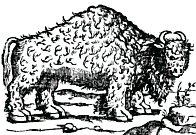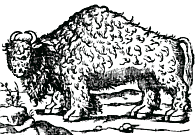

by Charles M. Yates
![]()
For years one of the main drawbacks to having buckskin clothing was the cost and/or effort that went into the material. Many of us have shied away from commercial leather because of the color and cost. Also, anyone who has ever tried to produce authentic brain tanned leather knows the intense labor needed to produce even the few hides for a pair of pants.
Recently, Col. John Baker and Stanley Wojcik put me on to the Little Sunlight web site that sells deer hide seconds. They have three grades of deer hides and at this date (updated July 2007) the prices are as follows (shipping is included in the price)
The Scrap Hides (lowest grade) are recommended for very small projects and I've never tried to use the Craft Deer Hide grade so I can't speak to their quality. I have, however, used the Heavy Hide grade and I really like them. As concerns the Heavy Hide grade, there are a few things you should know before ordering.
First, they are all seconds. There will be bullet holes in some of them and the thickness of the leather varies greatly from one part of the hide to another. I like these characteristics, however, because patched holes are correct for the clothing I'm making and I also try to use the thick part of the leather for the areas of the clothing that get the most wear. It takes 4 hides to make a pair of pants for me.
Second, when you get the leather, it will be a very ugly blue-gray color. That's because it's chrome tanned and not dyed. The nice thing about this is that they can be dyed any color you want with RIT clothing dye. Now, I can hear the purists screening "Foul" right now, but I'm lazy and cheap and, if you follow directions, you can have buckskin clothing which looks and feels very much like brain-tanned for about 10% of the cost and labor. AND if you foul up the dying process, you can use RIT color remover to take the leather back to its original blue-gray color. The other interesting thing about this leather is that I tried dying a swatch of it bright, sunshine yellow. I thought it would come out some ugly shade of green (blue and yellow make green), but it didn't. It came out bright, sunshine yellow! That means that the dye doesn't blend with the color of the leather, it overrides it. Also, by blending different color dyes, the exact color desired can be achieved.
I started out by purchasing a old wringer washing machine for $40. I figured with my luck, if I used my wife's washing machine, the next time she used it after I did my leather dying, all her underwear would come out looking like brain-tan. I thought and still think $40 is cheap to avoid that scenario.
I process 6 Heavy Hides at a time, so all quantities given are for that number of hides unless otherwise specified. I first wash the hides in hot water and 4 boxes of RIT Color Remover for about 30 minutes. This doesn't take out any of the blue-gray, but it does take out something, because the hides take the dye more consistently. If this process is skipped there is a very good chance that after dying the hides will have inconsistent coloring and look splotchy. I then wring the water out of them and let them dry.
The second step is dying the hides. Just prior to starting, I soak the hides in water so that they are completely water logged. I use 1 box of RIT TAN dye per hide. The dye is available at most grocery stores for about $2 per box. I follow the directions on the box for dissolving the dye in hot water. I then fill the wringer washing machine with hot water and add in a heaping tablespoon of powdered detergent and the 6 boxes of dissolved dye. I then start the agitator and add the completely soaked hides. Having the hides wet and the detergent added is very important in obtaining consistent color. After agitating the hides for about 45 minutes, I remove them a wring out all the water. I them wash them in cold water for about 30 minutes to help the dye set. The last step is to wring out the water and hang them up to dry. DO NOT USE A CLOTHES DRYER to dry leather, it only messes everything up.
Before making anything from the leather, remember that this leather will stretch a great deal. The end product should fit VERY snugly, because the leather will stretch a great deal with wear. The first pair of pants I made using an old pair of blue jeans that I could barely get into as a pattern. After wearing the buckskin pants for about ten hours, I had to go back and take out 4" from the waist. Since then they've stretched a little more.
![]()